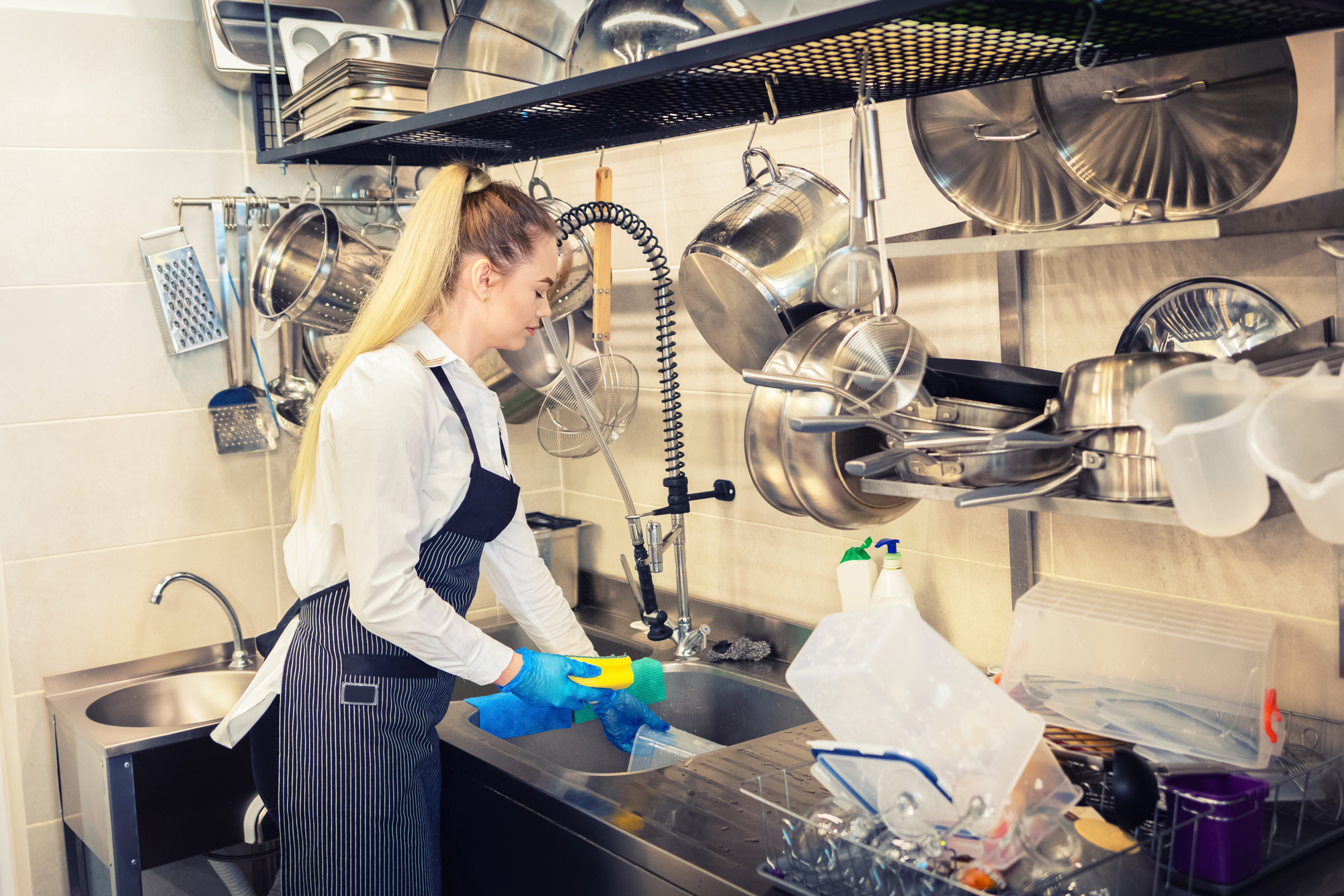A commercial kitchen, whether in a restaurant, hotel, or catering service, is a bustling hub of culinary creativity. However, with this creativity comes the responsibility of maintaining a pristine environment. Effective commercial kitchen cleaning is not just about appearances; it directly impacts food safety and quality. With several components to consider, understanding the basics can be a game-changer. Let’s delve into a beginner’s checklist to guide you through the crucial areas and practices of commercial kitchen cleaning.
Understanding the Importance of a Clean Commercial Kitchen
A commercial kitchen is a canvas for chefs, where ingredients transform into exquisite dishes. But the heart of every successful kitchen operation is not just the culinary artistry; it’s the cleanliness and hygiene that underpin every process. A clean commercial kitchen isn’t merely an aesthetic requirement; it carries substantial implications for the business and its patrons.
Firstly, a spotless kitchen ensures the health and safety of both the staff and the customers. In a place where raw and cooked foods interact frequently, the risk of cross-contamination is real. Proper cleaning practices significantly reduce this risk, ensuring that every dish that comes out of the kitchen is safe to eat. Then, there’s the matter of equipment longevity. Regular cleaning and maintenance can extend the life of kitchen equipment, saving costs in the long run.
Furthermore, cleanliness speaks volumes about an establishment’s professionalism. In an era where restaurant reviews can easily sway public opinion, a single incident linked to poor kitchen hygiene can be damaging. Conversely, upholding stringent cleaning standards can enhance a restaurant’s reputation, making it a preferred choice for discerning diners.
Daily Cleaning Tasks
The bustling atmosphere of a commercial kitchen means that by the day’s end, a myriad of cleaning tasks beckon. Ensuring these tasks are tackled daily is pivotal for the smooth functioning of the kitchen. Surfaces that come in direct contact with food, like countertops and cutting boards, are prime areas for bacterial growth. Cleaning and sanitizing these surfaces daily prevent the proliferation of harmful bacteria, which can lead to foodborne illnesses.
In addition to surfaces, the equipment used in daily operations, such as grills, stovetops, fryers, and utensils, accumulate food residues. Without daily cleaning, these residues can not only become breeding grounds for pathogens but can also affect the taste and quality of dishes prepared.
Furthermore, daily cleaning makes the daunting task of deep cleaning more manageable. By addressing the immediate mess and spills every day, the accumulation of grime and grease reduces, ensuring that the kitchen remains in an optimal state for the next day’s culinary adventures.
Weekly Cleaning Assignments
As the rhythm of a commercial kitchen ebbs and flows, there are areas that, while not requiring daily attention, cannot be left unattended for too long. This is where weekly cleaning routines come into play, acting as the backbone of longer-term kitchen hygiene. For example, while ovens might be used daily, the deep-seated grease and charred food particles within them might not be immediately problematic but can accumulate over time, affecting their efficiency and the quality of the food.
Similarly, storage areas, like walk-in refrigerators and pantries, might see spills and clutter over a week. Cleaning these weekly ensures food products remain uncontaminated. The kitchen’s exhaust system, another crucial component, can also benefit from a weekly review. Filters can quickly become clogged with grease and other particles, affecting their performance. Setting aside time weekly to attend to these areas ensures that they don’t degrade over time, leading to more significant issues.
Special Attention: The Floors
In the dynamic setting of a commercial kitchen, the floor is often the silent witness to the day’s hustle and bustle. With constant traffic, accidental spills, and the inevitable wear and tear, it’s subjected to immense stress. But beyond the visible challenges, there are the invisible hazards. Slippery spots, if left unchecked, can be accident-prone zones, putting staff at risk.
Regular sweeping and mopping with the right cleaning solutions can prevent the buildup of grease and other slippery residues. However, it’s also essential to focus on the type of cleaning agents used. The wrong chemicals can degrade certain flooring materials over time. Ensuring the floor is dried thoroughly after cleaning is another vital step, as residual moisture can become a slip hazard.
Additionally, focusing on areas beneath heavy appliances and counters is crucial. These spots, often overlooked in daily cleaning, can harbor moisture and food particles, leading to mold growth and unpleasant odors.
The Significance of Deep Cleaning
While daily and weekly cleaning routines maintain the kitchen’s general cleanliness, periodic deep cleaning ensures that every corner, nook, and hidden space gets attention. Deep cleaning, usually done monthly or quarterly, depending on the kitchen’s usage, ensures that areas like behind the large appliances, inside vents and hoods, and even the ceiling, are free from grease and dirt buildup.
Safety First: Handling Cleaning Agents
Commercial kitchen cleaning often requires potent cleaning agents to effectively remove grease and stubborn stains. However, these agents can be hazardous if not handled with care. It’s vital to store them safely, away from food and prep areas. Moreover, wearing protective equipment like gloves and ensuring the kitchen is well-ventilated during cleaning can protect staff from potential chemical exposure.
Regular Equipment Maintenance
While cleaning plays a pivotal role in maintaining a commercial kitchen, regular equipment maintenance cannot be overlooked. Equipment like refrigerators, ovens, and dishwashers function optimally when they’re not only clean but also regularly serviced. Regular checks ensure they run efficiently, reducing the chances of unexpected breakdowns, which can disrupt the kitchen’s workflow.
Training and Staff Awareness
Lastly, while the right tools and techniques are crucial, the human element is equally, if not more, important. Regular training sessions can keep the staff updated on the best commercial kitchen cleaning practices. Encouraging a culture of cleanliness and responsibility ensures that every team member plays their part in maintaining a hygienic and safe kitchen environment.
The Path to a Spotless Commercial Kitchen
A commercial kitchen’s efficiency, safety, and reputation hinge significantly on its cleanliness. By understanding and implementing effective cleaning practices, establishments can ensure they serve not only delicious but also safe food. With this beginner’s guide to commercial kitchen cleaning, you’re well-equipped to embark on a journey of culinary excellence in a spotless and hygienic environment.


